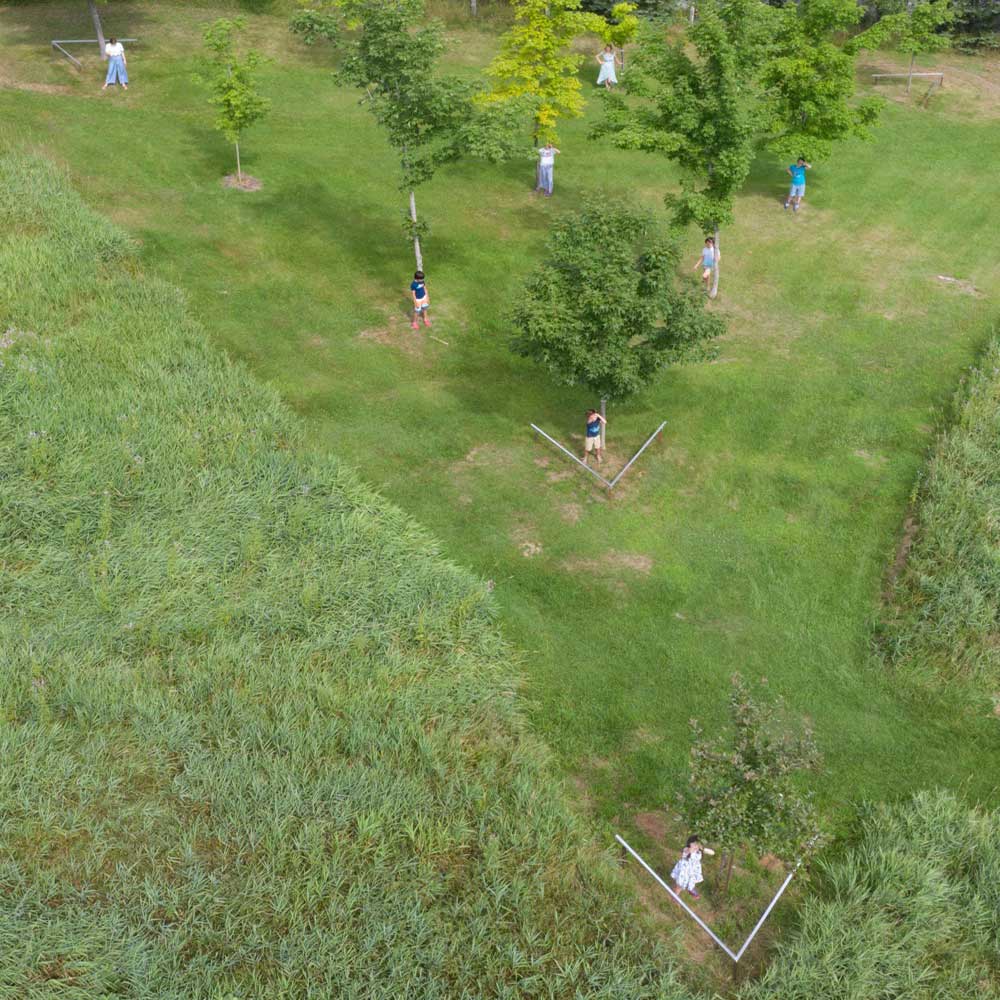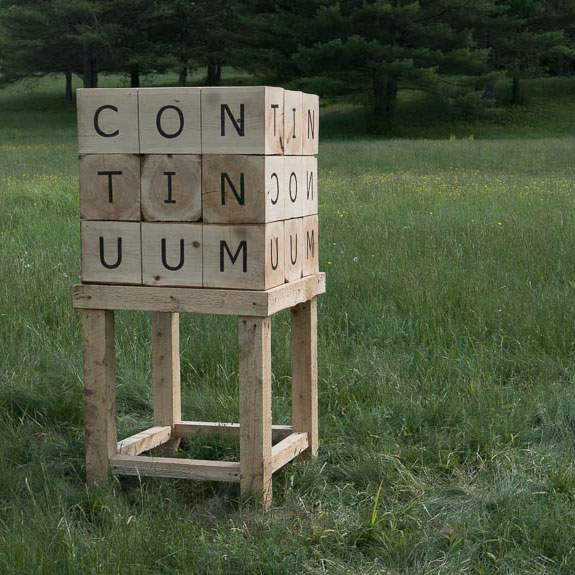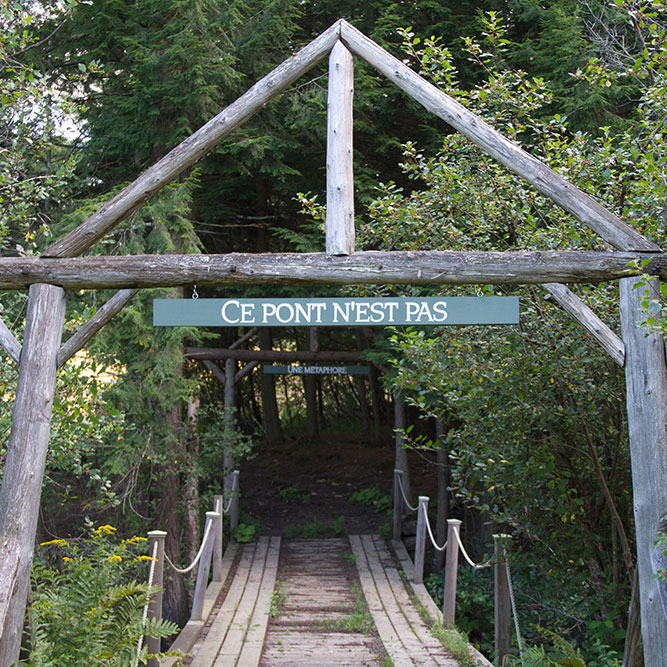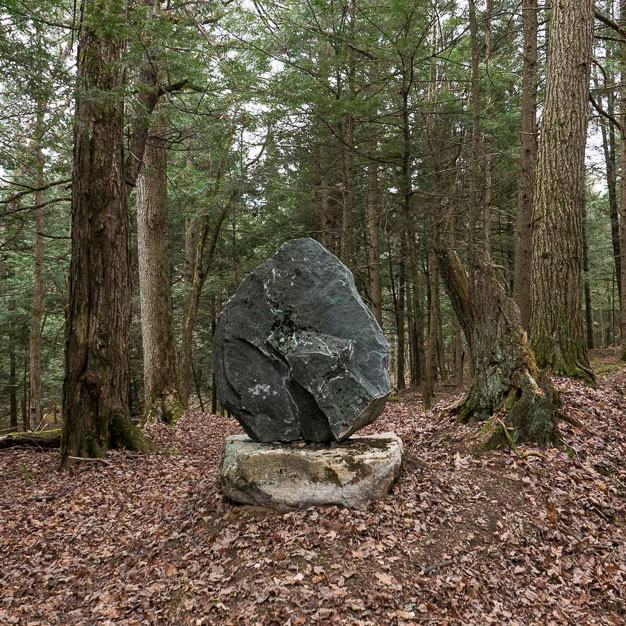Abenaki Walking II, The Clearing of the Land
Patterson Webster
Abenaki Walking II, The Clearing of the Land 2018–2020
Ash trunks and branches, split rails, tree stumps, harrow,
cedar posts, apple trees, stacked logs, granite, acrylic paint
Collection of the artist
This site-responsive installation, spanning a wooded area and a cleared field, dramatizes the many layers of history embedded in the land at Glen Villa Art Garden. The discovery of a large rock pile (created when rocks were removed from the fields to facilitate plowing) inspired the artist to memorialize a painful historical era: the uprooting and displacement of the Abenaki, the first stewards of the land.
Trunks and branches from ash trees—which the Abenaki believe were used to create the first humans—are inverted and painted to suggest people striding across the land. Walkers move freely through the woods until they encounter a palisade that blocks their path. Now burned and gouged, the Walkers turn their backs on the barrier, simultaneously shunning and shut out by this obstacle to their traditional movement across the land.
A single post painted with an enlargement of the smallpox bacillus stands near the end of the palisade which is in the process of collapse, having served its purpose as protection for the settlers. The land beyond attests to changes wrought by European colonizers: a rock pile, orderly rows of apple trees, rusted farm equipment, tree stumps. A split-rail fence erected by the artist defines and encloses a grassy space inside of which stand four pieces cut from a single oak tree, painted in pink or blue plaid to suggest a settler family, firmly-rooted and unmoving.
The title of the installation, “The Clearing of the Land,” is engraved on a granite headstone at the entry to the site, followed by the date 1803, the year Europeans first received land grants in this part of Quebec. There is no end date on the gravestone, a signal that the clearing of land continues.
Beyond the cleared field, four Walkers stand atop the rock pile that inspired this installation. Three figures—two tall and one short—are entangled in barbed wire, caught literally and metaphorically by the long-lasting effects of colonialism. Nails arranged in a grid cover the child-sized figure, suggesting the devastating effects of the settlers’ division of the land into individually owned parcels. The fourth Walker stands apart, an Elder unable to free subsequent generations from the past.
This human history is framed by markers of the land’s geological record. Earth mounds and gullies formed by the artist draw attention to environmental features formed over millennia while more ephemeral elements, such as animal tracks and wildflowers, are a reminder that the land is in a continuous state of change.









